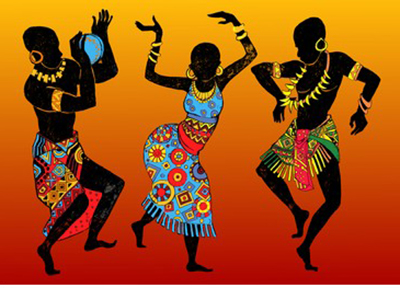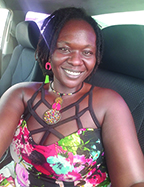

By Melanated Glow
In indigenous cultures, dance is a part of life. The type of dance is traditional and passed down. These types of dances have so much deep meaning incorporated into the movements. From “Black” people in the Americas, to the Carribean, to Africa, movement of the body is directly linked to the circulation inside of it. In other words, you are not able to move a part of the body that is tight, tense, or inflamed with a free range of motion.
Brazil has the second largest population of Black people outside of Africa, although most times the lighter ones promoted in the media. This is a tremendous statistic as Brazil is just a country in South America being compared to much larger nations and entire continents. With the habitation of our people comes culture infused with indigenous traditions, movements, and beliefs. One of the popular dances of Brazil is Samba. The flow of the body when dancing Samba helps with circulation and flexibility. There are so many rotations, isolations, and spinal twists inside of the traditional dance that the people might not know how beneficial the dance is but reap its benefits daily.
Jamaicans and other Carribeans are known for being able to “wine dey hips.” This smooth flow of the waist and hips from a youth keeps the circulation going in the key parts of the body. It enhances the space between the upper and lower regions of the body. Since dance is a part of the culture, anyone that participates receives the benefits of motion. Some elders are able to wine down to the ground in their more mature years because of how active and nimble they were when younger.
The Ethiopian shoulder dance is a beautiful cultural tradition passed down through the generations. It is amazing to see the old and young dance this traditional dance together showing an essence of the culture being kept alive in the lineage. As with the other examples, in order to dance the dance, there is a level of freedom needed in the inside of the body, otherwise it would be met with discomfort and wouldn’t be performed with such grace and fluidity.
There are so many indigenous cultures that have held on to the essence of who they are in language, traditions, foods, rituals, dances, and the like. The three examples listed here were selected for the variety that they offer while all resulting with beneficial results in the physical. Because the body is connected, regardless of the part of the body focused on with dance, as long as it has full range of motion, the body itself has full range of motion. The greatest part of these dances being traditional is that it is experienced by the young and continued into the later years. This allows the youth to keep their bodies open as they age.
In today’s society, we are in unnatural positions regularly that need balancing. We are experiencing an increase of inflammation in the joints as a whole. The way we sit in chairs doesn’t allow for lumbar, spinal, or back support. The way we sleep on soft mattresses is not natural as the body is working all night to accommodate for the lack of firmness. Pillows sometimes put our necks in uncomfortable positions to the point we wake up with neck tension. The way we sit on the modern toilets is not proper as we should be in a squat the way toddlers that are not potty trained do naturally in their pamper. This consistent misalignment that we are forcing on the body isn’t being balanced in most cases. Maybe if we increase some traditional dances in our lives regularly, we will have less surgeries, strokes, and health issues.


Be the first to comment